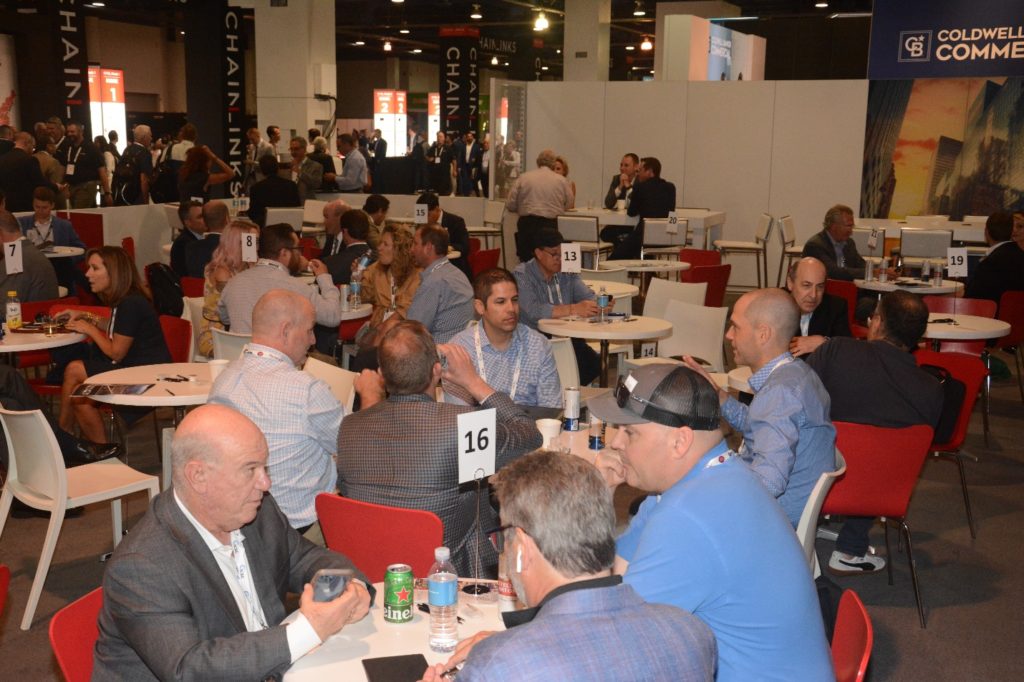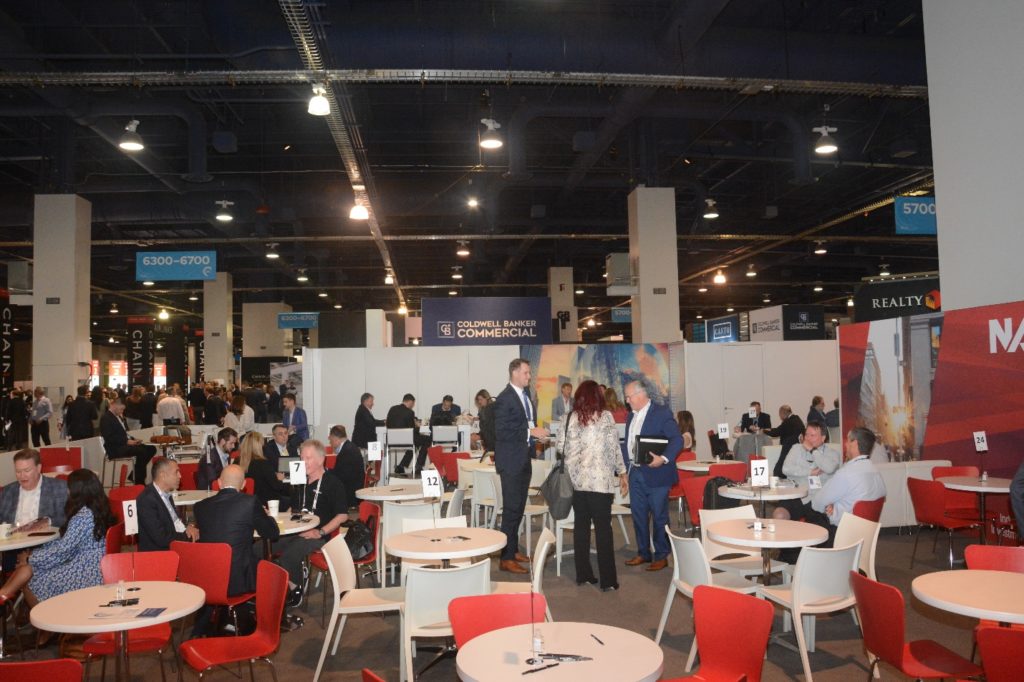ICSC’s RECON 2022 Takeaways
We’re baaaaaaaack!
Well, two-thirds anyway, based on the number of folks on May 23-24 that meandered the showroom floor at the Las Vegas Convention Center for the biggest commercial real estate conference in the U.S.
There were approximately two-thirds of the regular attendance figures at RECON – some 22,000 compared with 38,000 or so pre-Covid. Ok that’s not quite two-thirds yet the exhibition space, with only the South and Central Halls open, was 66.66% of the original convention center, and it felt busy, at least on Monday.
The NAI Global booth in the South Hall was centrally located and this year the corporate office booked nearly 300 meetings for brokers from NAI Offices in over two-dozen states.
And the buzz was optimistic, starting with “RETAIL IS NOT DEAD!”
To wit, in the days following ICSC a page 1 Wall Street Journal story ran this headline, “Resilient Shoppers Provide Retailers a Boost.” This was a couple of days after Target and Walmart announced they had missed their respective earnings targets, causing both stocks to drop sharply. Not so for Macy’s and Dollar Tree Inc., Ulta Beauty and others as they reported strong sales increases in their most recent quarters. Collectively these six companies, and their earnings reports demonstrate once again that the pandemic and economy are affecting each company differently and serve as a reminder that retail is in fact not dead, it is just evolving.
Here are some of the takeaways from conference conversations, media coverage of the event and comments from NAI professionals from multiple offices, beginning with Katelyn Panella from NAI Business Partners (pictured below) in Billings, Montana, and Bennett Greenbaum with NAI Partners in Austin, Texas. When asked on a podcast a few days after RECON if they were having conversations with retailers that were concerned by inflation, threat of recession and all the other bad news, if those companies were having second thoughts on expansion plans, both of the Next Gen retail brokers said flatly, no, none of the retail companies they are talking to are hesitating with growth plans, at all. They also added the quick-service restaurants, or QSRs, were still super active in looking for new sites with especially drive-thru QSRs remaining the most active, as they were during the depths of the pandemic.
“Brick-and-Mortar is integral for both merchants and consumers,” so said Matt LoPiccolo, a VP with Matthews Real Estate Investment Services in a globest.com article. LoPiccolo says that half of online sales are completed with in-store pickup, and that a hybrid experience is emerging based on how online traffic influences foot traffic at the property where goods are purchased.
Others attributed the pandemic for the accelerated adoption of omnichannel shopping and consumer buying habits. Omnichannel operations allow people to shop online but then use retail’s physical locations as the last hub for pick up and stores are becoming the “last mile” where shoppers and retailers intersect. And the hybrid-retail numbers are even greater than 50% according to two other sources. 72% of US retail transactions will occur in physical stores, according to market research firm Forester. And ICSC found that 62% of online orders are fulfilled at physical locations.
Grocery-anchored shopping centers are the most attractive for many tenants, and are also preferred property types by investors. Landlords and their grocery tenants have increased spending on façade upgrades and renovations, new signage, lighting and outdoor amenity areas.
Restaurant visitation is back to pre-pandemic levels in most American cities.
Retail is still over-supplied, according to Joshua Poag, president and CEO of Poag Shopping Centers, based in Memphis. Even so, he asserted in a different globest.com article, brick-and-mortar sales continued to climb in Poag centers owned and managed by the firm.
None of this is to say that investors are shying away from retail assets, because they are not. In fact, the average asking price for retail assets on Crexi increased more than 3.8% from 4Q2021 to 1Q2022, moving from $303.81/sf to $315.50/sf.
Retailers are following their customers, that is, the ones who left urban centers and helped spur growth in the suburbs during the pandemics Great Migration. According to grocery-anchored shopping center owner Phillips Edison & Co. (PECO), they are shifting their real estate strategies to focus on suburban expansion. Mike Conway, VP of National Accounts and Retail Partnerships at PECO, told an ICSC audience in a prepared statement that his firm’s plans are supported by strong macro tailwinds including long-term work-from-home trends as well as an aging millennial population seeking space to raise their growing families. Retailers recognize that they have to be closer to their customers, and the customers are increasingly choosing to live in America’s suburbs.
PECO isn’t the only shopping center owner reporting strong suburban activity. Macerich’s CEO Tom O’Hern told globest.com that his company’s regional town centers across the country have displayed incredible resiliency during the pandemic and are now thriving, with shopping at physical stores and restaurants up, movie theaters re-opened and home improvement and accessories retail concepts doing well.
Scenes from the NAI Global booth in the South Hall






